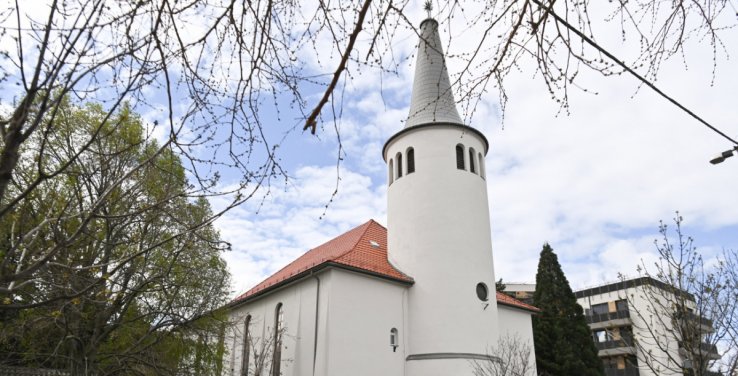The building of the Museum of Applied Arts, which is 150 years old this year, was completed in 1896 and handed over as the closing of the millennium celebrations on 25 October, 1896 in the presence of József Ferenc. The museum palace, designed by Ödön Lechner and Gyula Pártos, one wing of which was made for the applied arts school, was opened to the public a year later, on 20 November, 1897, after the installation.
The museum was closed five years ago, in 2017, due to the reconstruction works of the building that started at that time, but now it has been temporarily reopened to the public, although only the glass hall on the ground floor and the gallery on the ground floor, which on 22-23 June, something on 28 July can be visited from until 25 September thanks to a special exhibition.
This time, the building that is awaiting renovation is home to artefacts that are also waiting to be reborn - read the statement of the Museum of Applied Arts sent to our newspaper. A selection of the Esterházy artefacts, which are still in a state of disrepair, will be presented at this exhibition.

Preparation of the exhibition in the glass hall (Photo: imm.hu)

The Esterházy art treasures can be viewed in the glass hall until 25 September (Photo: Csilla Halász – Mihály Ludmann – Zsófia Viczián: Lechner all books, Látóhatár Publishing House, 2017)
The Esterházy treasury, which was created during the Turkish wars, grew through diplomatic gifts from the 19th century onwards, thanks to dowries and conscious patronage of the arts. The castle of Fraknó in western Hungary, which was built on a rock and was further away from Turkish subjugation and battles, served as a place of guard for centuries. At the end of the 17th century, the ducal collection, which also includes goldsmiths' masterpieces made of noble and exotic materials, rare Far Eastern ceramics, and Turkish decorative weapons, which is almost uniquely rich in the country, became inalienable as part of the family trust, informs the Museum of Applied Arts.
However, the fate of this group of art treasures was not only influenced by the war in the past; The war events of the 20th century proved to be more decisive than ever before in the history of the collection. During the First World War, selected pieces from the treasury were transferred to the Museum of Applied Arts in Budapest, where, with the approval of the Dukes of Esterházy, they were displayed in the museum's permanent exhibition between the two world wars.

We can see a selection of the war-damaged and never exhibited art treasures of the Esterházy ducal treasury (Photo: Facebook page of the Museum of Applied Arts)

One of the art treasures of the exhibition (Photo: imm.hu)
In the last months of the Second World War, during the siege of Budapest, the family considered it safer to place the treasures in the Buda Castle, in the Esterházy Palace on Tárnok Street. However, fate and the war intervened: a few weeks later, the building was hit by a bomb, and the shattered remains of the treasury's unique jewels were hidden under the ruins for years.
The fate of the collection also reveals that some of the objects were destroyed; the remains were transported to the Museum of Applied Arts at the request of Duke Pál Esterházy. The fact that this tragic war event did not lead to the complete "destruction" of the treasury is solely due to the ongoing conservation and restoration work carried out in the museum's restoration workshops for generations, even today. The restoration of artefacts damaged to varying degrees requires unique methods so that, if possible, we can once again create an authentic overview of this noble collection that has been preserved as a unit in a unique way in Hungary.

The Museum of Applied Arts in 2017 (Source: Csilla Halász – Mihály Ludmann – Zsófia Viczián: all Lechner volumes, Látóhatár Publishing)
The exhibition presents a selection of decorative items from the Esterházy treasury that were severely damaged, partially destroyed or broken into small pieces, but which represent the luxury of the Hungarian nobility. Bearing the traces of the senseless destruction of the war, these wrecks await as mementos, so that they can be reborn in their former beauty and presented in their former unity through professional and thoughtful restoration and reconstruction intervention, the Museum of Applied Arts announced.
The exhibition of the art treasures of the Esterházy family can be viewed between 22 July and 25 September.
Cover photo: The building of the Museum of Applied Arts was designed by Ödön Lechner and Gyula Pártos (Photo: FSZEK Budapest Collection)






































Hozzászólások
Log in or register to comment!
Login Registration